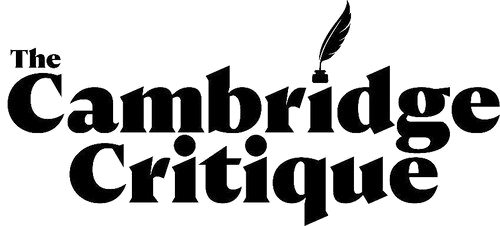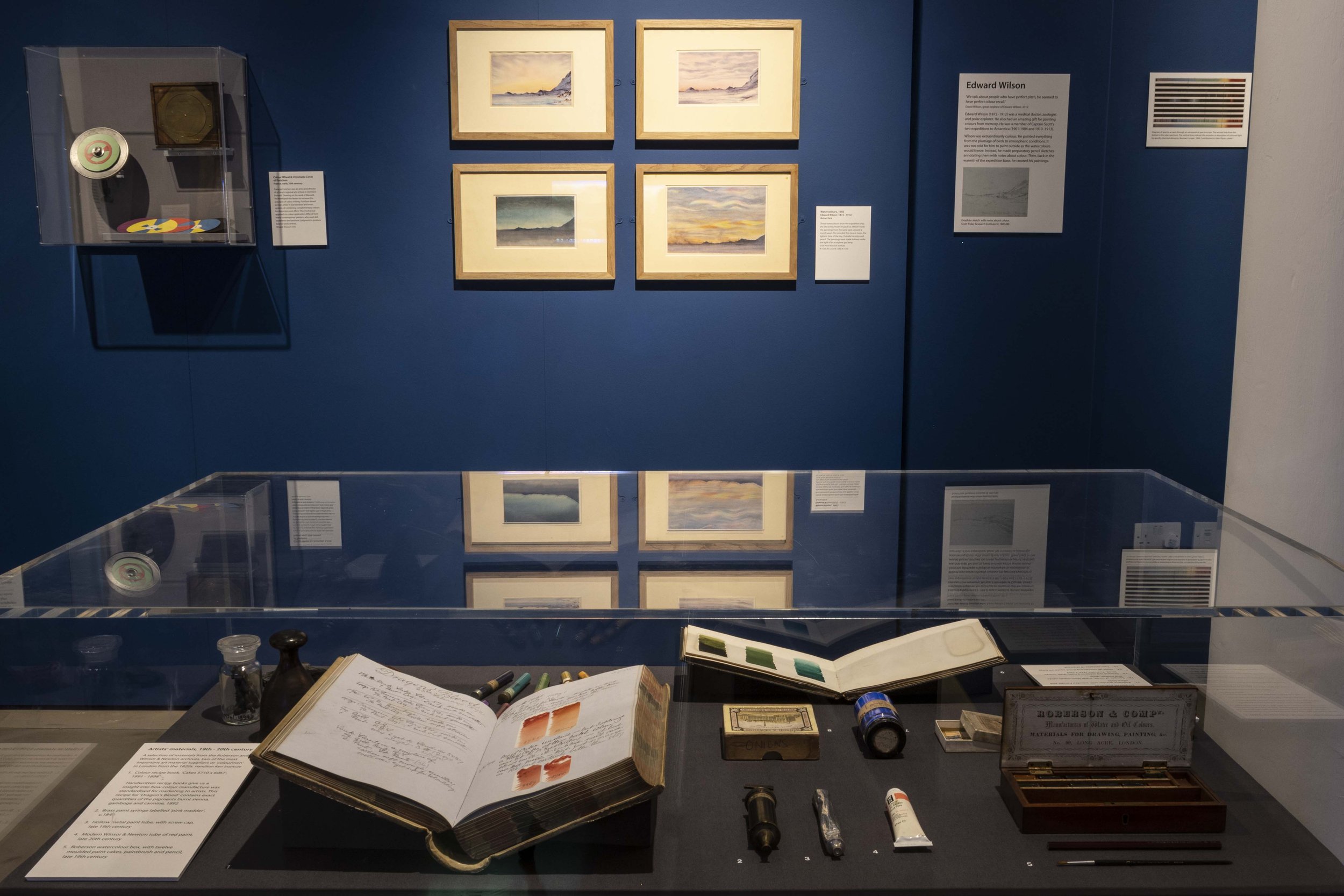COLOUR AT THE MUSEUM OF ARCHEOLOGY AND ANTHROPOLOGY
Greek statues, altered for colour - traces of paint, were found on the Acropolis in Athens in 1886. A challenge to preconceived ideas on art.
Colour is an ambitious exhibition. Few features are so vital to our life in this world. So much of our knowledge of the nature around us comes from colour. In this exciting new exhibition. Curator Anita Herle has rounded up the components: Art, Science and Power. Colour creates mood, it affects our emotions, it informs out wellbeing. Where to start ?
Perhaps with A for Art. Helen Frankenthaler is a potent artist to choose. Her work Covent Garden Study explores the bright hues created by overlapping pools of red, pink and orange. The brilliant coloured and flat background contrasts with the thick lines and blobs of paint which appear to float above the surface.Expertly selected from the Kettles Yard collection this painting is an impressive example of colour at work. The work by Georges-Pierre Seurat (1859 - 1891), here in the exhibition is an exquisitely chosen manifestation of how colour can be perceived by people quite differently.
And to add an anthropological dimension, we see Aboriginal paintings all executed in a remarkable consistent bark colour but which has meaning beyond its aesthetic appeal.
Through music and colour the exhibition taks us to the science and answers the question What is colour? We now know medically and scientifically that it occurs as the result of interpretations by the human brain of different light wavelengths. Rays of light are focused by the lens in our eye and projected upside down on the back of the eye or retina, which contains a layer of colour-sensitive cells called rods and cones. A higher proportion of rods enable some animals to see in the dark, whereas some birds can see ultra-violet and bats can see infrared.
The science of colour -
Which is when we come to Isaac Newton and his Cambridge experiment. Newton judged that the spectrum was composed of seven colours - violet, indigo, blue, green, yellow, orange, and red. He thought there was an analogy between the optical spectrum and the seven notes of the musical scale. His claims were never universally popular. Goethe accused him of an imprisonment of the imagination in his ‘dark room’ and was he right? Goethe studied the eye's changing responses and highlighted the association between colour and emotion.
Although Goethe's work was dismissed by many physicists, it was taken seriously by many artists and philosophers, such as Turner and Kandinsky, Schopenhauer and Wittgenstein. The remarkable use of colour these artists deploy surely represents their own experimental originality which no amount of scientific fact can effectively dispute.
The cache of art and science is just one of the paradoxes within the study of colour. This lively show challenges as it goes. There is a test for colour blindness amidst the interesting artistic contributions. The fusion of art and science is fascinating. Humanae a Spanish art work by Angleica Dass is a series of photographs of amazingly 4,500 people which matches pixels of their nose. Visitors to the exhibition are invited to participate in this intriguing project which seeks at base, to reveal the impossibility of racial division based on skin colour. Quite an achievement.
The richest solid blue found on earth has been highly prized since antiquity. Laboriously extracted from mines in north-eastern Afghanistan, stone nuggets travelled along distant trade routes into China, the Middle East and Egypt.
Arriving in Europe via Venice, the pigment extracted from lapis lazuli was known as ultramarine from the Latin for ‘over the sea’. It became the most highly valued pigment in Europe, comparable to gold. But whilst the exhibition reveals so much about this mysterious colour source, it does not ignore the more quotidian contribution to the creation of Blue. Reckitt's Blue has a fascinating corner all of its, own, its origins its commercial use and its success in the history of representation of blue in the world. The other colour carefully considered is red, derived from cochineal. Its history is just as complex and equally bizarre. The Conquistadores discovered it as they admired the art of the peoples they encountered and of course it comes from the blood of insects ground to a dark red. It was so prized it became more valuable than silver in the years following the Spanish conquest. From the 16th century, millions of dried insects or 'grains' were exported from Peru and Mexico annually, with 72 tons shipped from Peru to Spain in 1578.
The European desire for cochineal was intense. English pirates seeking the dyestuff preyed upon Spanish galleons. Amazing that wars were fought and thousands of lives lost over this much prized colour source.
Today traditional works use these sources . The art of feather capes and objects derived from parrots is still alive and this exhibition pays the complex process and its artists full respect and admiration.
Colour is so comprehensive , it covers children’s art, perceptions of colour as between cultures (this in a complex collective exercise ) and concludes with a request for everyone to share their own colour story.
Artists’ colour books









